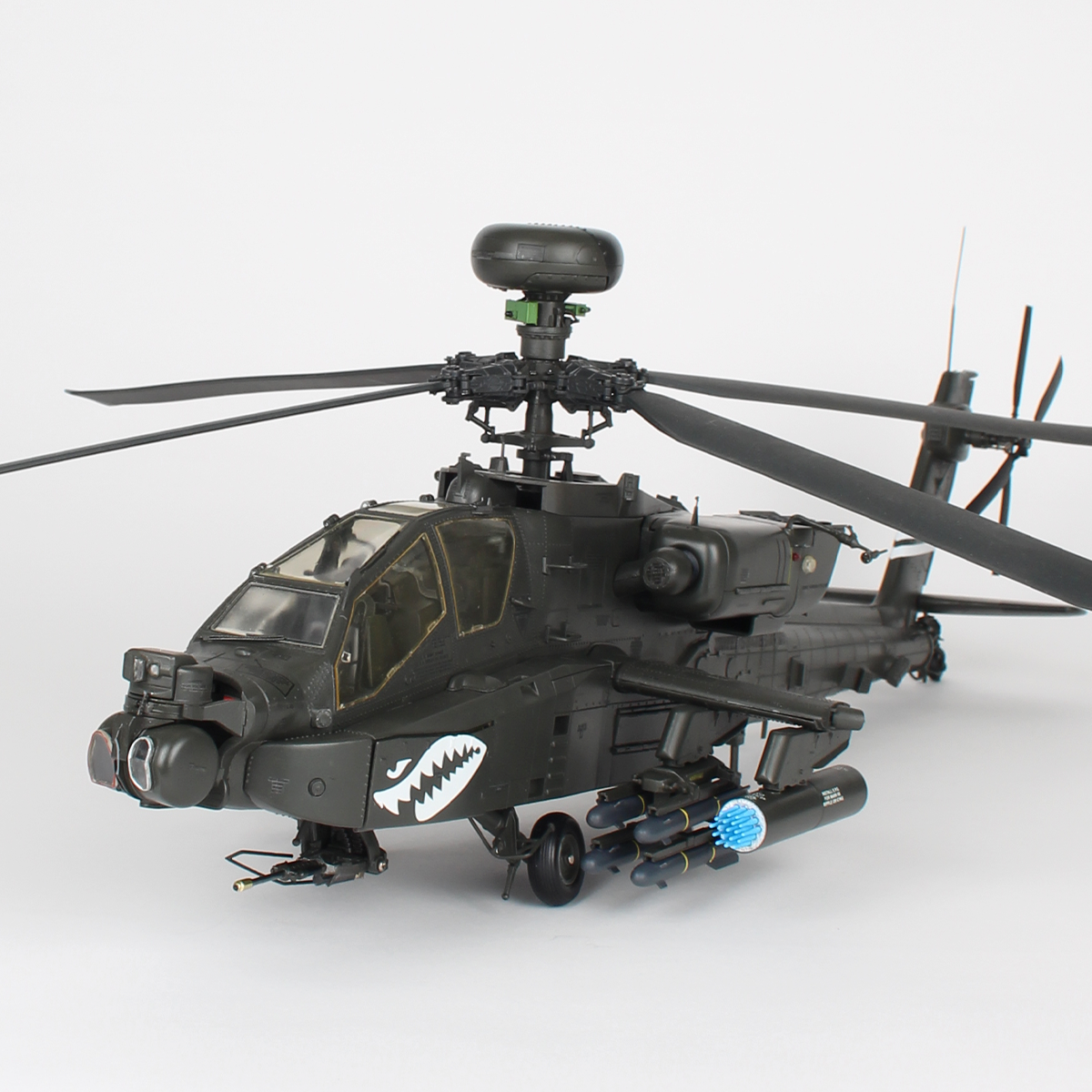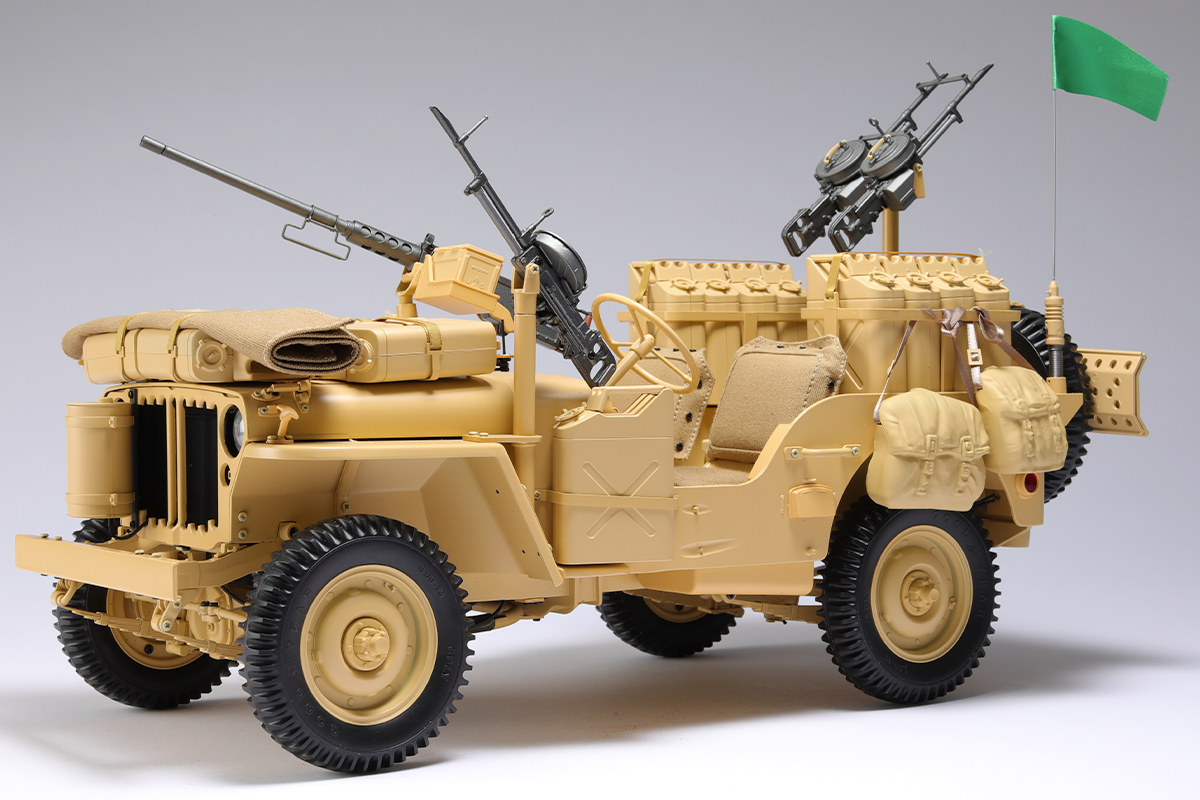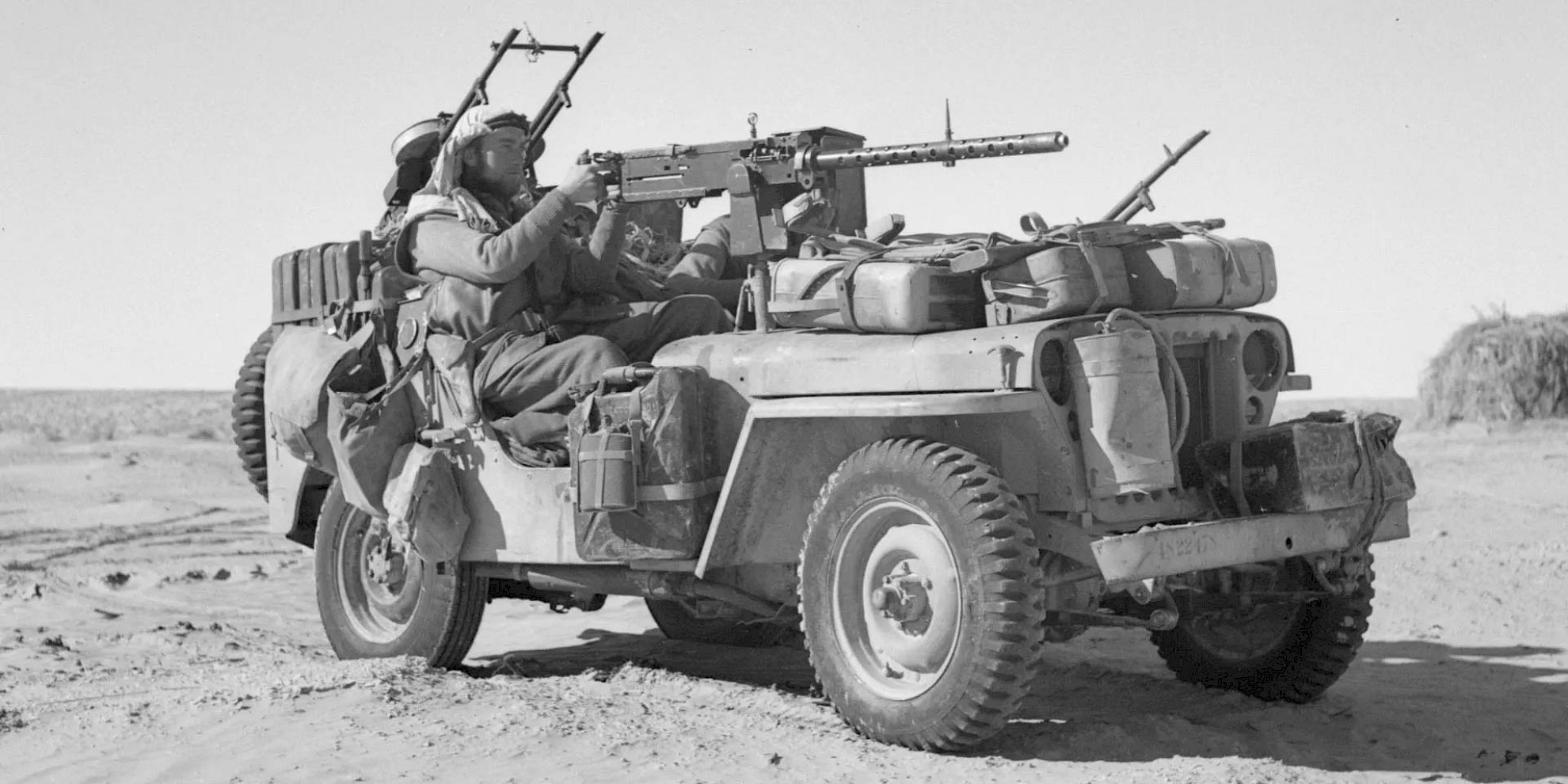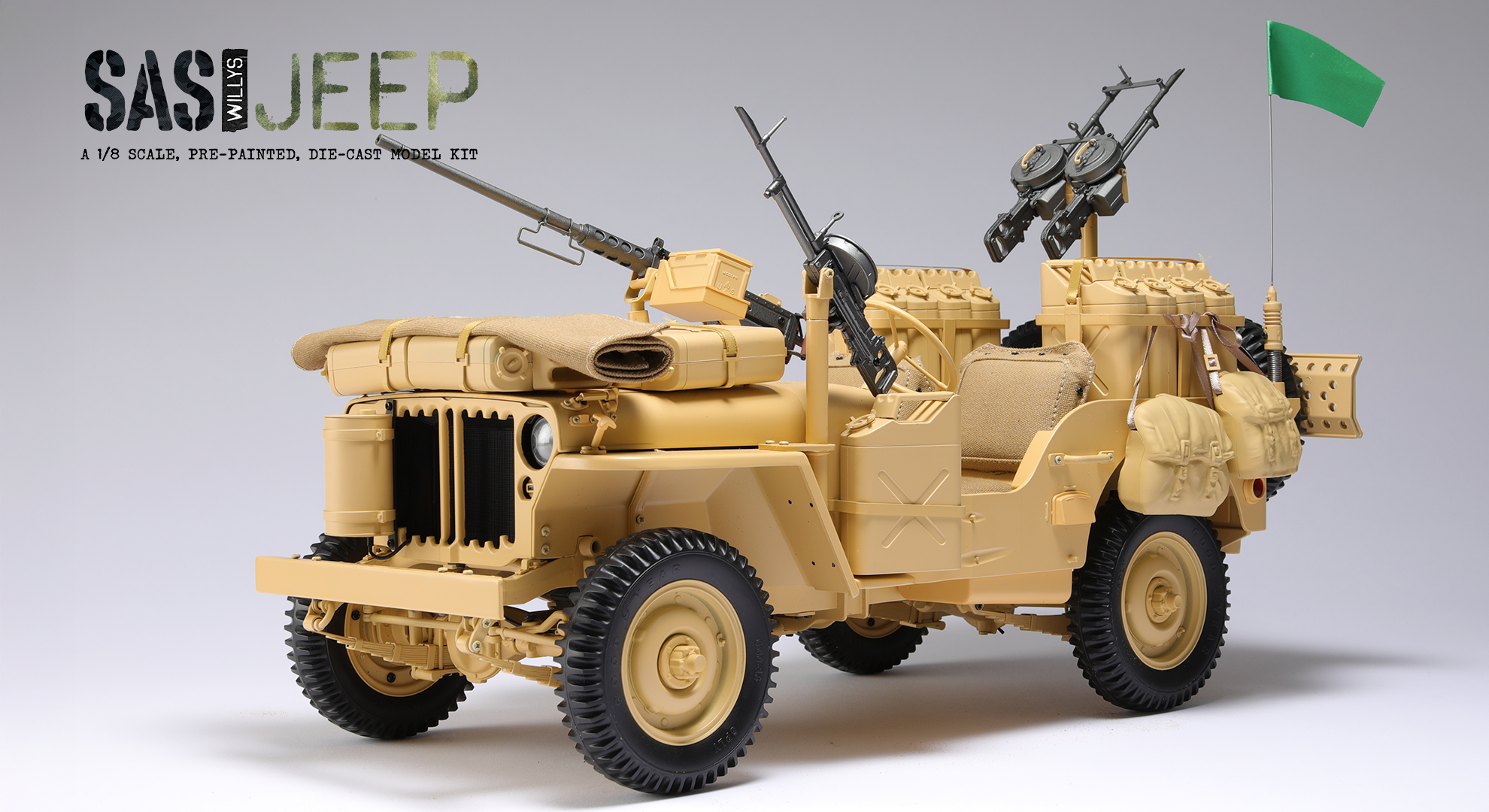
WILLYS SAS JEEP
Fall 2025
In July 1942, at the suggestion of Blair 'Paddy' Mayne, the SAS procured a consignment of Willys jeeps, transforming them into formidable vehicles for their unconventional, specialized missions in North Africa.
This 1/8 scale die-cast model includes the improvised modifications made by the SAS for harsh desert conditions, such as additional jerry cans, armament upgrades, sun compass, and wheel channels – features that helped "... the jeep [to] become the iconic vehicle of WWII with an almost mythological reputation..." (Charles K. Hyde, historian).
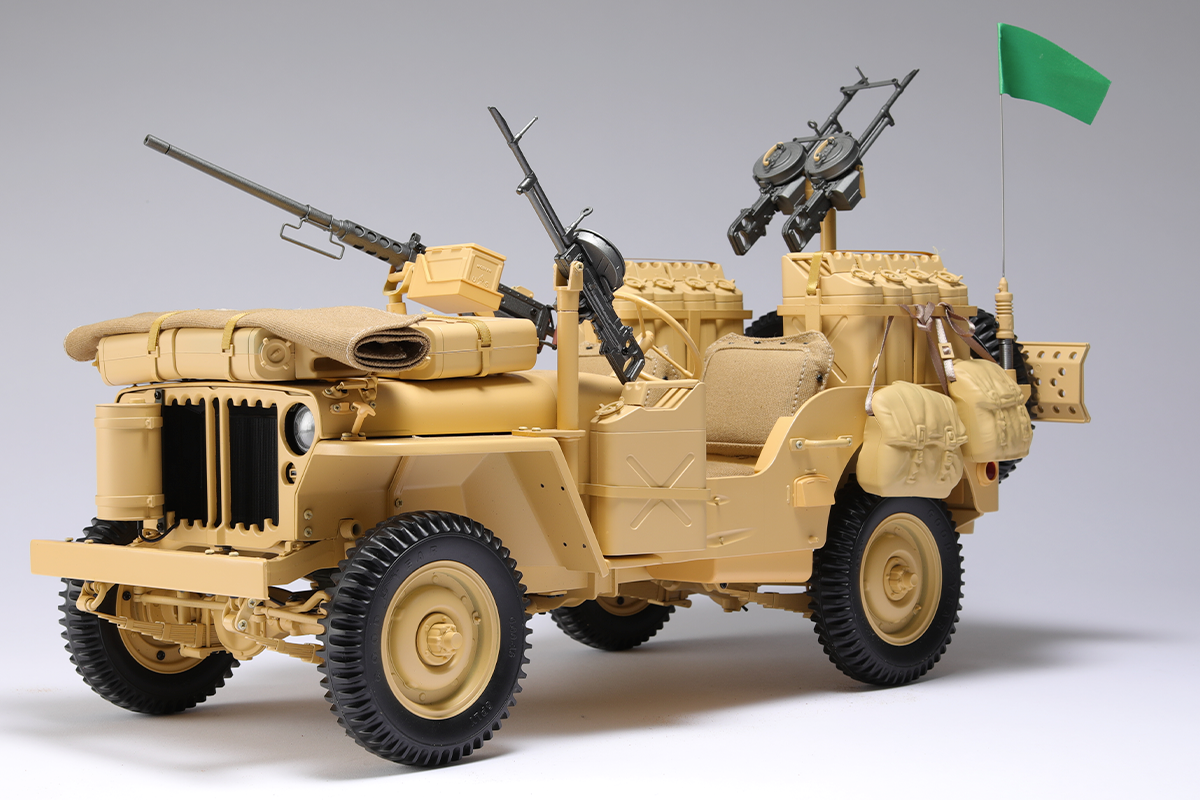
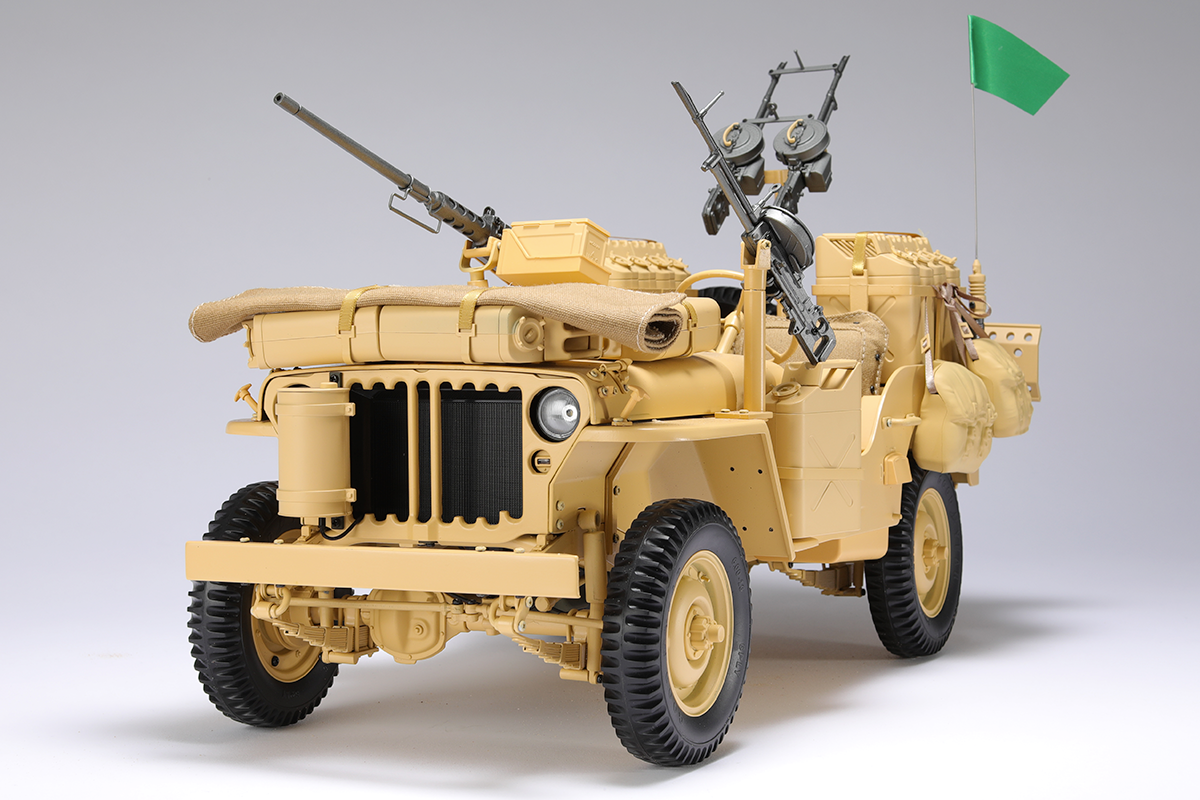
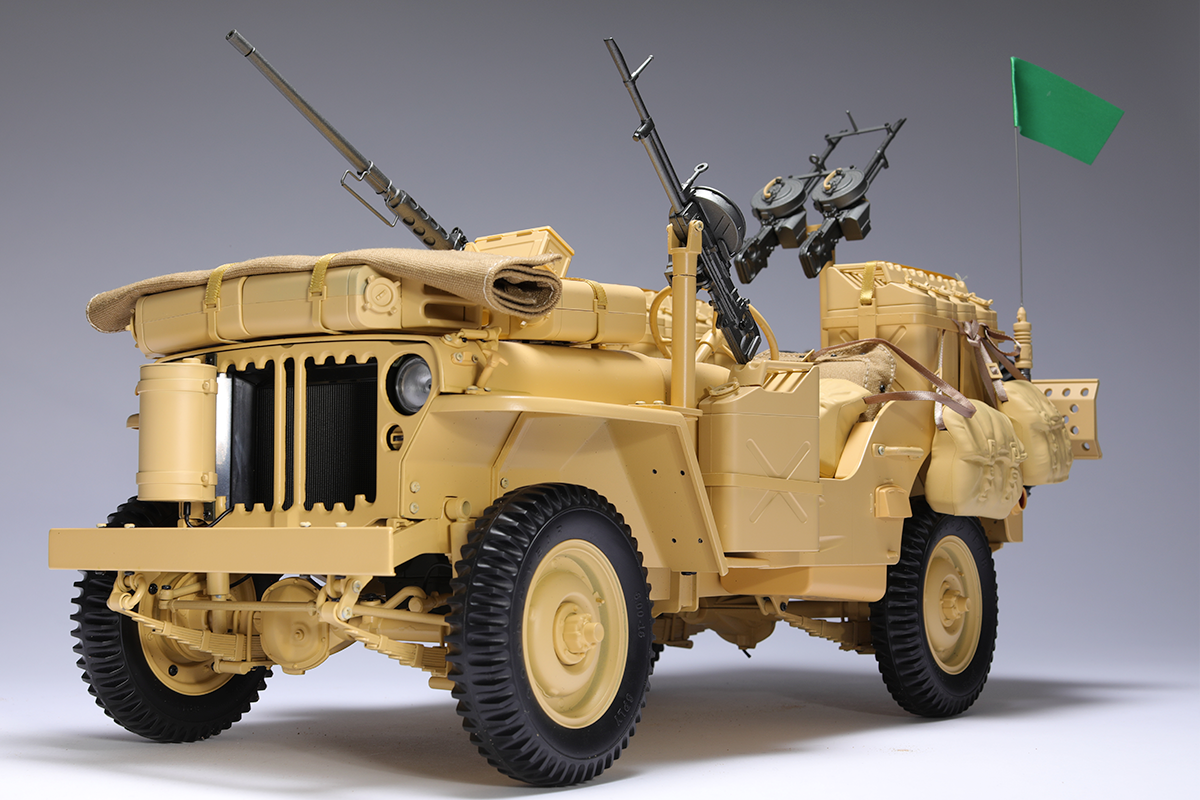

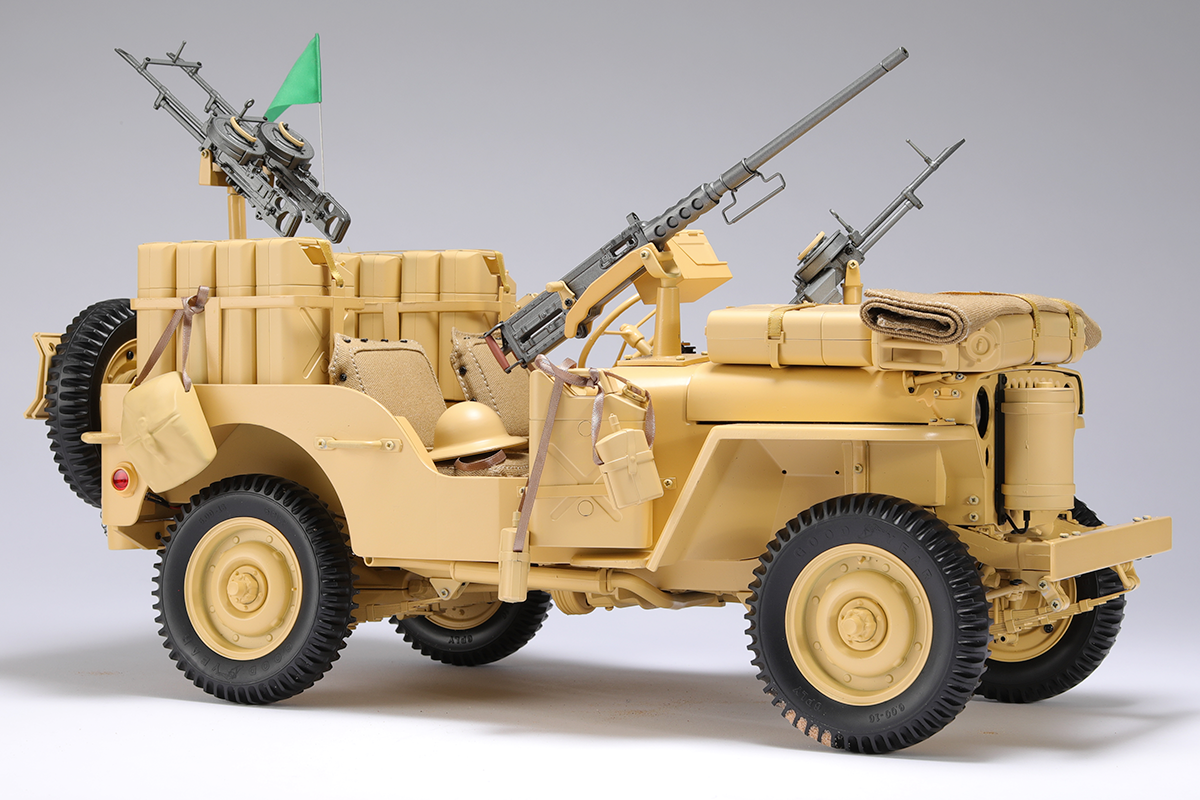
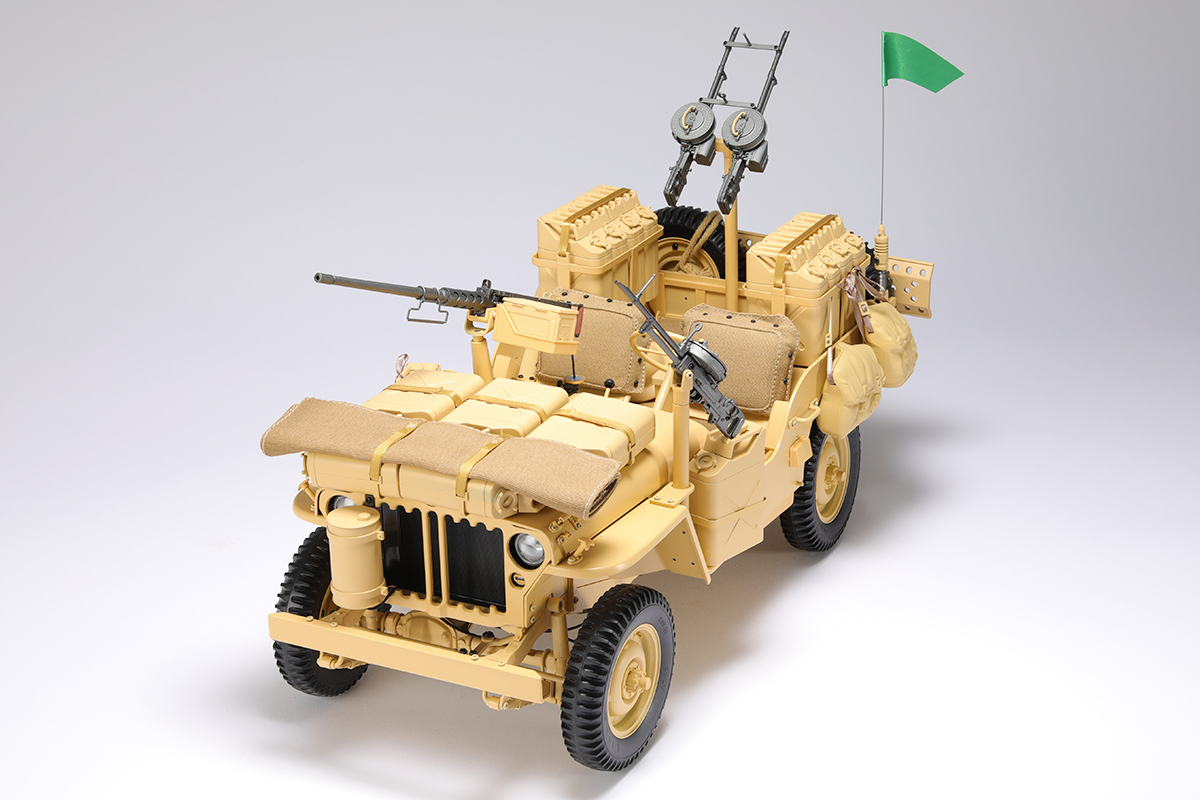
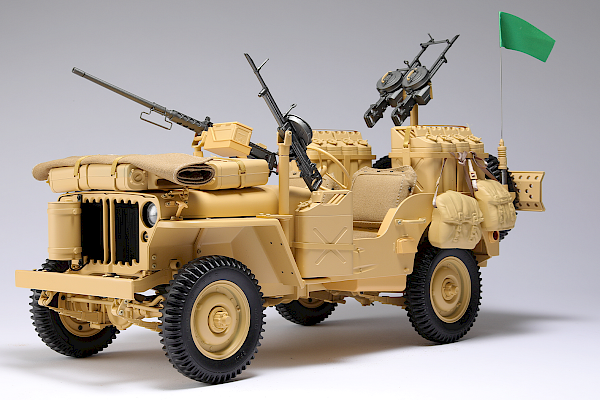

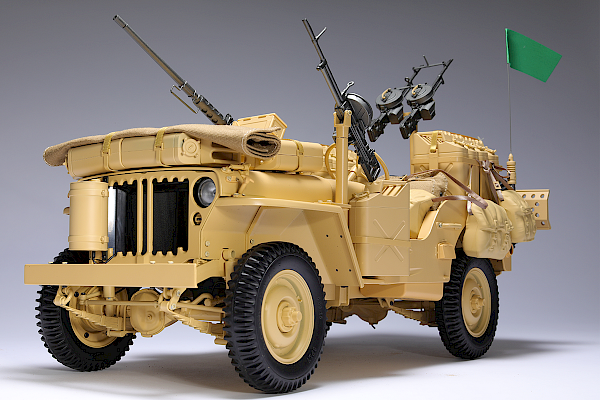
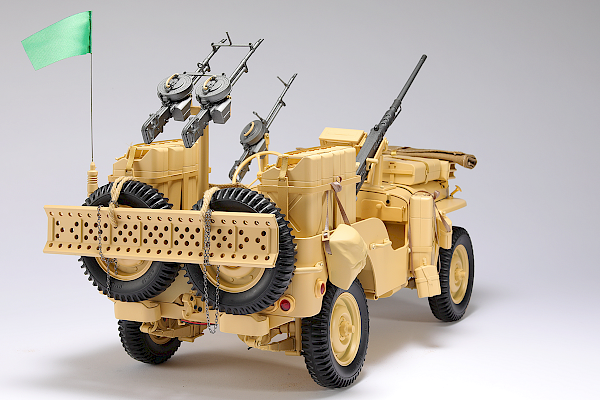
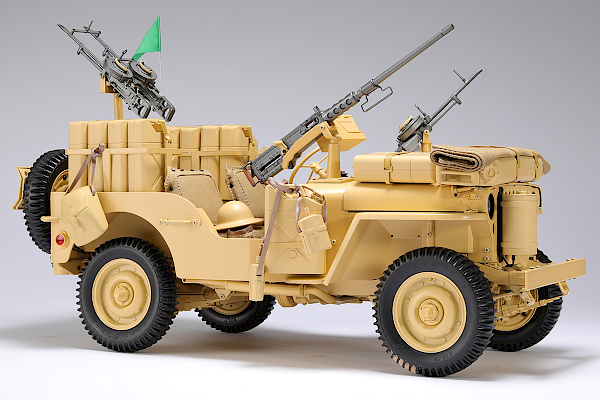
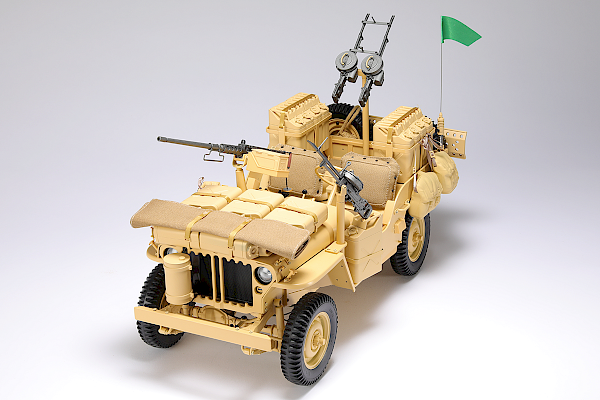
Specifications & Features
SAS Jeep Features
The SAS modified jeeps in the field for their desert raids in Egypt, removing the canvas roof, windscreen, side screens and doors to reduce weight. Operating in harsh desert conditions, all but two of the radiator grille slats were removed to improve air cooling, and a water condenser was attached.
To extend operational range, jeeps used by the SAS carried additional fuel in jerry can racks attached to the rear internal mudguards with more cans strapped horizontally to the hood.
Equipment such as Bagnold's sun compass and metal wheel channels were added to assist in navigation and mobility across sandy terrain, along with canvas covers for concealment and protection.
The SAS mounted several armaments, commonly using twin or single Vickers K machine guns and .50-caliber M2 Browning heavy machine guns.
Willys 60 hp engine (the L134 "Go Devil") powered the jeep.
Specification
Scale: 1:8
Materials: Body and chassis made from zamak metal
Length: 16”(430 mm)
Width: 8 11/16” (220 mm)
Height: 11” (280 mm)
Weight: 11 1/4 lbs (5.1kg) approx.
Number of parts: 600 approx.
Features
- Functioning lights and sound
- Pre-painted parts in British Standard Colour No.61 Light Stone ('Desert Yellow')
- Replica single- and twin-mounted Vickers machine guns
- Replica Browning machine gun
- Accessories including hats and bags
- Upholstered seats
- Metal wheel channels, canvas cover and jerry cans
- Bagnold sun compass
It's all in the detail
Outstanding detail at 1:8 scale
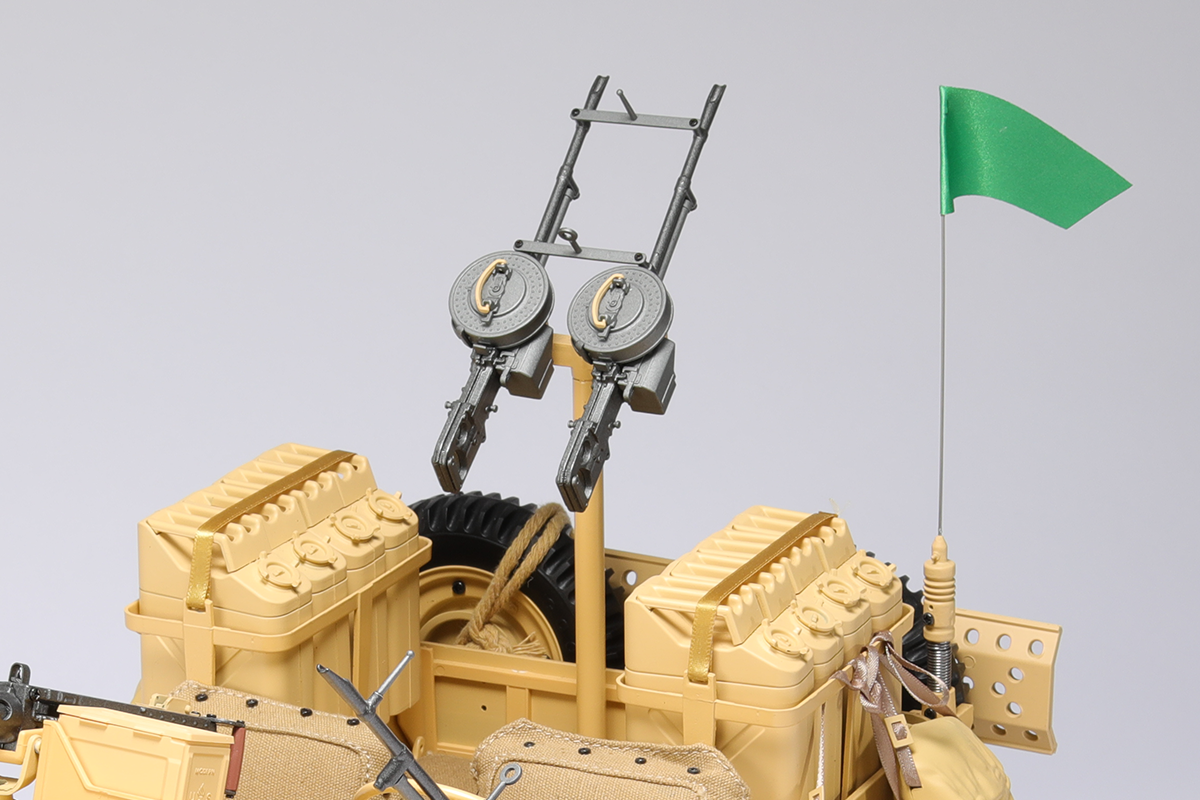
VICKERS MACHINE GUNS
Twin- and single-mounted on pivots
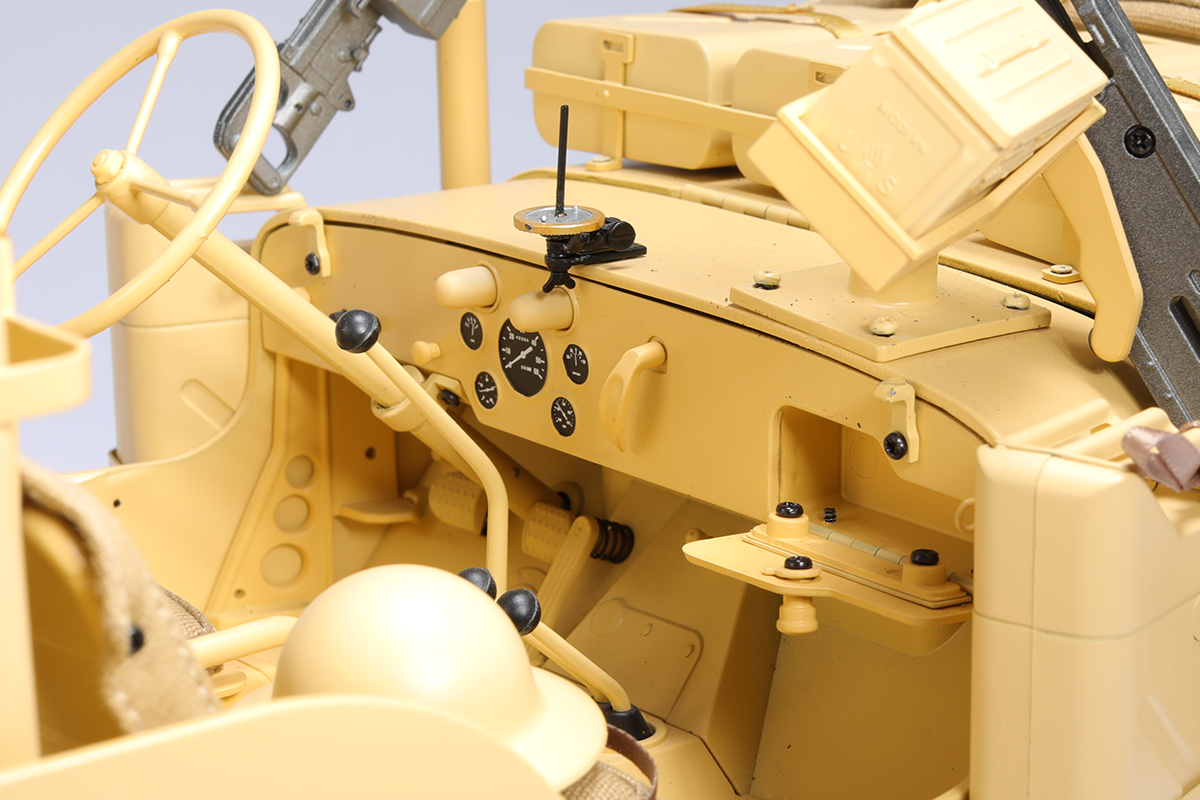
Bagnold's Sun Compass
Enabled navigation of the featureless desert
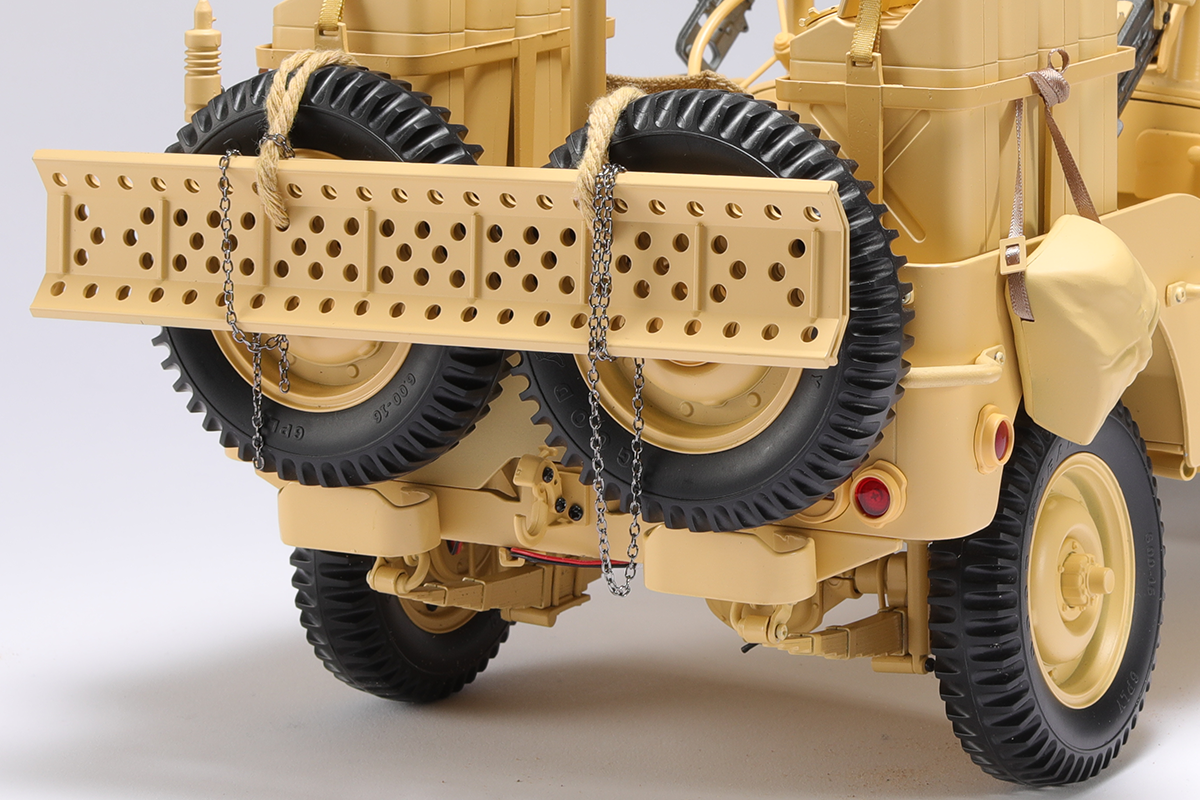
Metal Wheel Channels
Used for soft sandy terrain
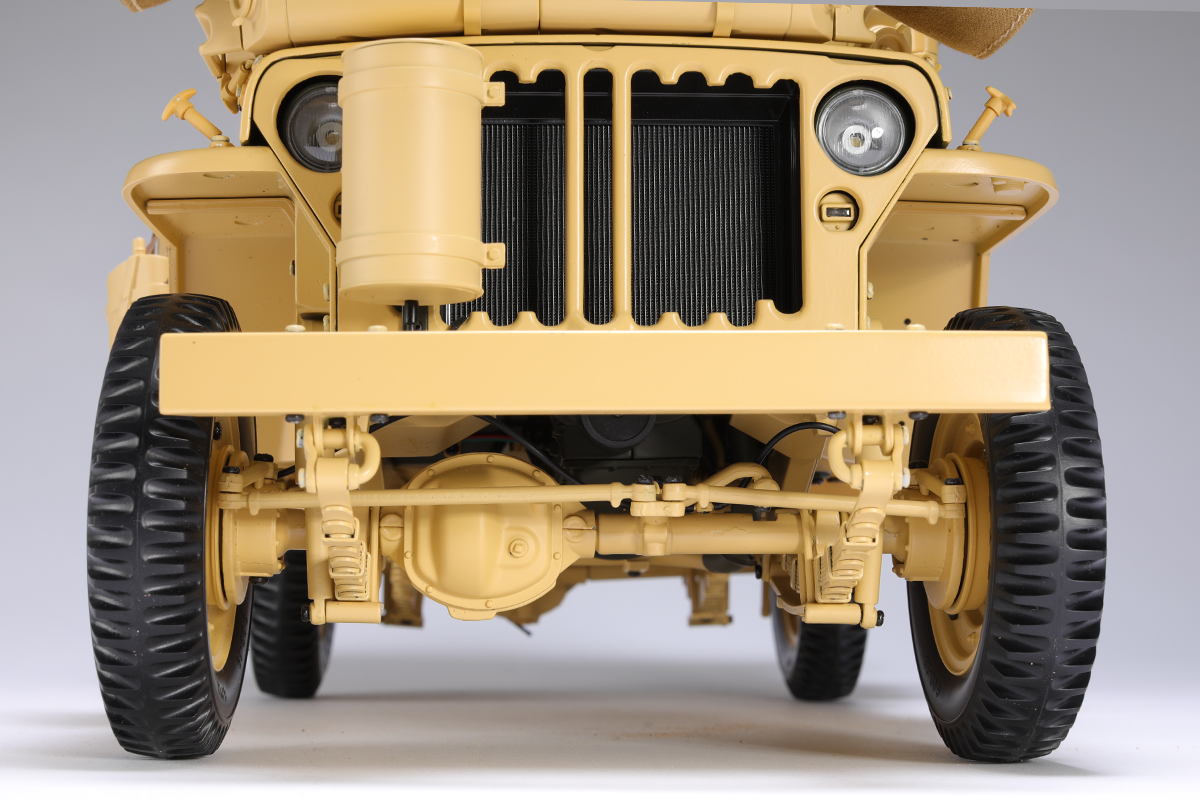
Front Detail
Radiator and condenser modifications for extreme heat
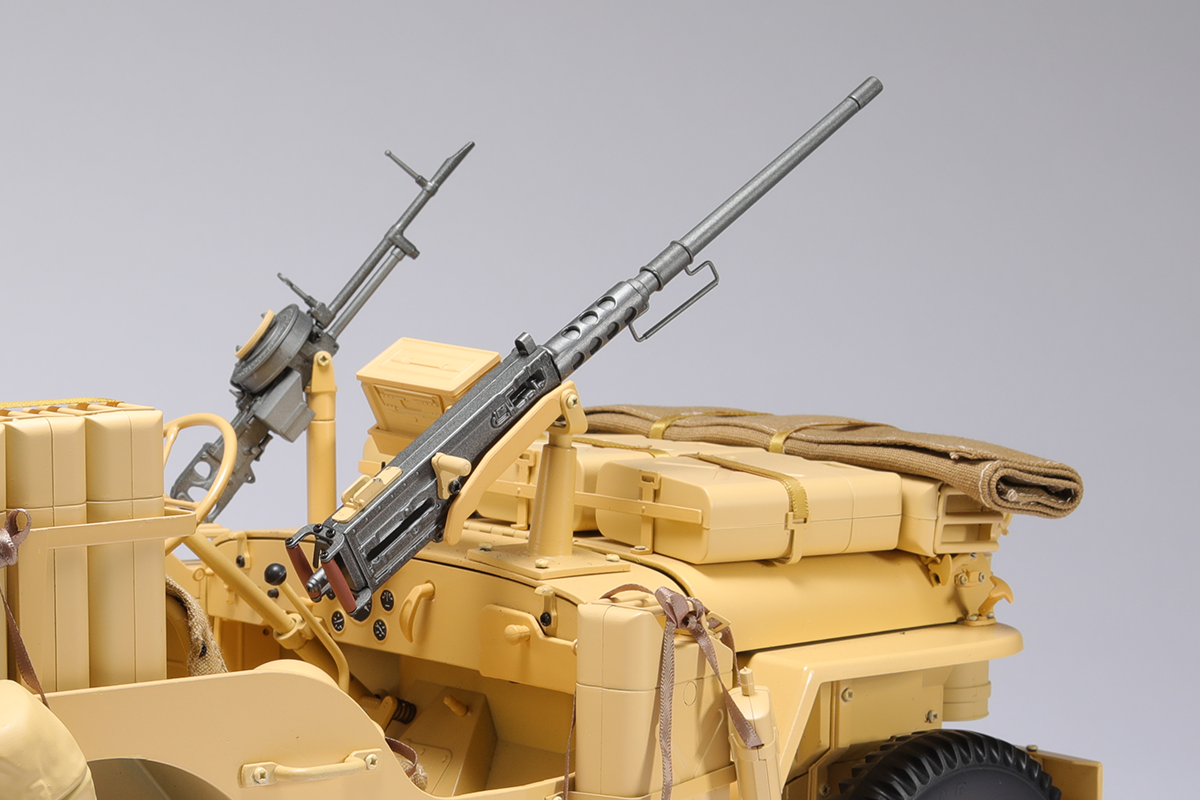
Browning Machine Gun
Often seen on the passenger side
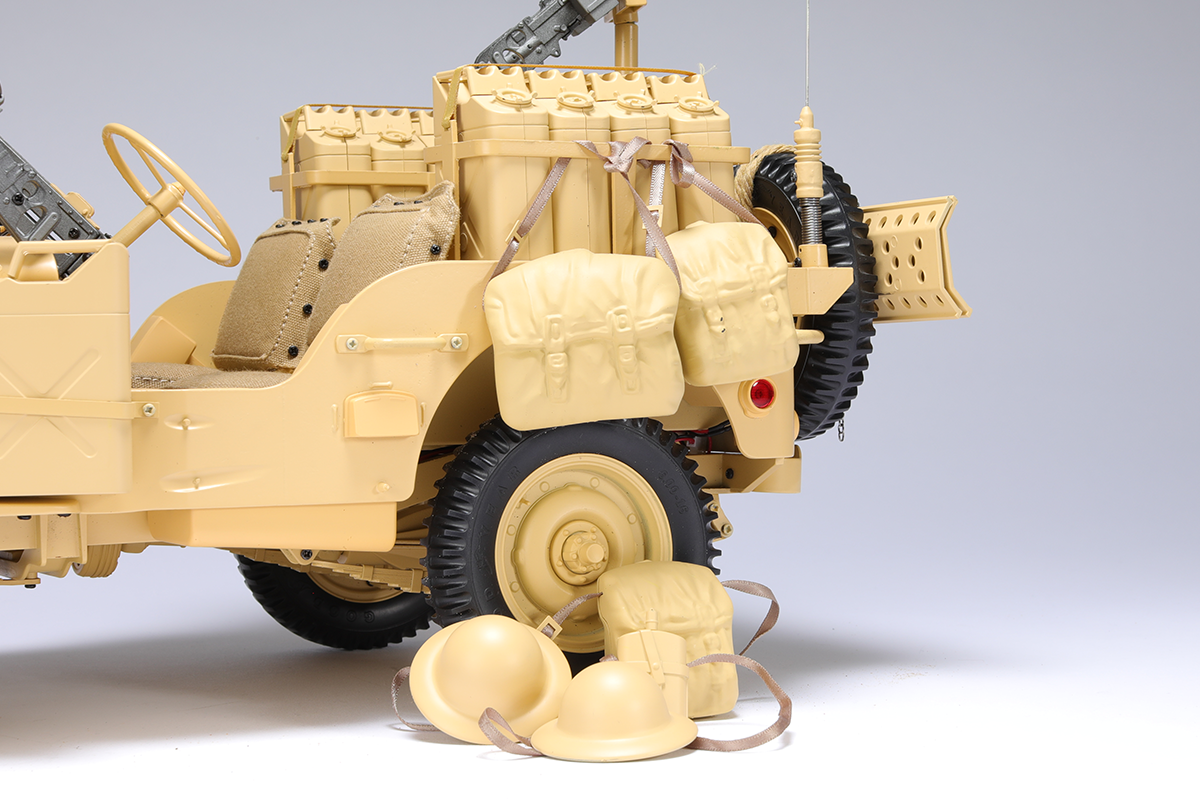
Accessories
Including hats and bags for storage and personal kit
VIDEO
Your buying options
When you place your order we will send your first pack with the first stages of your kit to build your model. Following this, you will be sent another pack every month for 11 months. You will be charged monthly.
Alternatively, you may choose the 24-month plan click here for more details.
Dispatching Fall 2025
We ship worldwide

PACK 1 ONLY $74.99
then $149.99 per month

PACK 1 ONLY $74.99
then $79.99 per month
Willys SAS Jeep
How the SAS Transformed the Second World War
An edited excerpt of bestselling author and historian Damien Lewis in conversation with the Imperial War Museum, London
In North Africa, the SAS destroyed on the ground more warplanes than the RAF did at the same time. There were 387 proven, but more like 450 in reality. So, this small body of men who never numbered more than 600, moving in their fast-moving jeeps, destroyed more war planes on the ground than the entirety of the British Royal Air Force and that's an incredible achievement.
It all started in the unforgiving expanse of the North African desert. The North African campaign was particularly challenging because of the harsh geography of the desert environment. Bases were separated by thousands of miles of unmapped, arid desert, with the majority of navigable areas being towards the coast. At this uncertain stage of the Second World War, the Allies were looking for more modern and innovative methods that might turn the tide of war in their favor.
In North Africa, David Stirling, a Guards officer who had been trained as a commando was becoming increasingly frustrated with the way in which the officers in charge were operating, and felt that the unique skills possessed by him and his fellow commandos were being underutilized. He realised that the vast stretches of inland desert were being completely ignored, and there he saw an opportunity.
David Stirling had the idea that if he could get small bodies of men in through the desert, he could strike far behind the enemy lines, appear by complete surprise and hit the enemy where they least expected it. That was the genesis of the idea for what became the Special Air Service, the SAS.
To start with, David Stirling had about 60 volunteers and these were hand-picked individuals, mostly former commandos, like David Stirling was himself. Initially the idea was that they would insert by parachute, by air, drop deep into the desert, approach the air bases, the initial target of the raids on foot, carry out their raids, and then be returned from those raids by the vehicles of the Long Range Desert Group, which was the forerunner, you could argue, of all desert raiders. No one in Middle East High Command, which was the command supposedly in charge of them, wanted them to exist or succeed or do what they intended to do. This was seen as being ungentlemanly, piratical warfare in the extreme, not the way the British officers should behave, and no one was supporting it, apart from one or two of the top generals and Winston Churchill himself. One of the first things they had to do was to steal their own base, and they literally went round all the other Allied camps in the area stealing tents, chairs and tables, food for the mess, they even stole a grand piano for their sergeants mess, and that's how they first established their camp.
Following a disastrous first operation dropping in by air to attack three air bases, the commanders of the Long Range Desert Group suggested that, rather than parachute in, they should be driven. This began a series of operations with the LRDG that were extremely successful – proof that this fast moving, hit and run piratical kind of operation would actually succeed.
The unit's reputation grew as they successfully executed daring raids and sabotage missions behind enemy lines. This success attracted volunteers from other units and even civilians, and their numbers began to climb rapidly. In October 1942, the unit was renamed, becoming known more simply as the SAS. As the British Army recognised the effectiveness of the SAS tactics, more resources were allocated to the unit and this allowed them to experiment with new tactics.
The SAS acquired a few Jeeps to test out, and they were brilliant vehicles for traversing the desert. You could be very nimble in a 4x4 - great over all terrain, plus you could carry a lot of your equipment in the back. So they were perfect. But what they didn't have was weaponry. And so, they scavenged Vickers K machine guns from some obsolete Allied warplanes. They bolted them onto the jeeps on pivots, and they realised that they could drive into enemy air bases, use the machine guns on pivots to shoot up all the warplanes and drive out again just as quickly. As soon as they departed their base, they were a law unto themselves, and that's one of the things that got to middle East High commanders, a lot of the middle ranking officers, that they had no control over the SAS on the ground once they departed on operations. And that was the great strength of their way of waging war. It meant they could try things out. It meant they could think the unthinkable and put it into action. Just like that idea with the Vickers machine guns, and test out whether it was possible.
The SAS not only gained a reputation amongst the Allies, but Axis soldiers too. Word began to spread about the night-time raids, where, seemingly out of nowhere, Allied soldiers would attack and destroy vital equipment and supplies, then disappear just as fast.
German general, Erwin Rommel, said of the SAS "this one unit has caused me more harm and damage than any other unit of similar size within Allied forces." And it wasn't just harm and damage in terms of war material destroyed, it was actually much more harm and damage to the morale of his troops because if you can be attacked anywhere when you're asleep in your bed at night, hundreds of miles behind the front line, it's absolutely devastating for your morale.
After their time in North Africa, the SAS continued to grow in size. They would go on to play a vital role on D-Day and continue to disrupt, destroy and intimidate German forces to great effect throughout Sicily, Italy, France and Germany until the end of the war.
Watch the full interviw here: HOW DID THE SAS TRANSFORM THE SECOND WORLD WAR?
Technical Specification
WWII Willys MB Jeep: Four-wheel drive vehicle
Weight: 2 tons (4,000 lbs)
Dimensions: 3.36 m (132.3″) long, 1.58m (62″) wide, 1.77 m (52″) high
Engine: 2.2-liter inline-4 engine
Dual Vickers K machine gun: mounted in front of the passenger's seat or in the rear facing back
Single Vickers: mounted on the drivers wing
Browning machine gun: .50 inch heavy machine gun manned by the 'gunner'.
Bagnold's SAS Jeeps
The SAS owed much of their success to the scientific talents of Major Ralph Bagnold, whose sun-compass invention revolutionised desert travel.
Bagnold's sun compass has been described as: 'Simply, it was a knitting needle set vertically in the centre of a horizontal white shadow disc, 3 inches in diameter. The face of the disc was graduated in 360 degress of bearing, and the disc could be rotated in its fixed mounting to follow the sun through the day from east through south to west, according to a card giving the sun's azimuth every 10 minutes of the day.'
At Bagnold's suggestion, water condensers were fitted to the radiators of all vehicles to recycle water, connecting them to the overflow pipe from the radiator. Boiled water from the radiator condensed into the two-gallon can which had been bolted to the running board and half filled with water. When the water in the radiator boiled, the steam condensed in the can, and when it stopped boiling the vacuum in the radiator would suck the water back and fill it up again. 'If all the joints were air tight there would be no need to 'top up' the radiator for hundreds of miles'. (Bill Kennedy Shaw, LRDG Intelligence Officer)
Ralph Bagnold was also responsible for inventing the sand channels, providing the perfect solution to the problem of getting stuck in the sand, after spotting some steel sections used to roof trench dugouts during World War I in a Cairo junk shop. First the men dug out some of the sand from in front of each rear wheel, sloping downward to the base of each tyre. 'A channel section was laid in each valley, on which the wheels could bite as the car accelerated forward', explained Bagnold. 'This usually carried the car well beyond the front ends of the channel'.
Bagnold also invented the technique of driving with reduced tire pressures over loose sand and at speed over sand dunes.
You may also like...
